BTM energy storage completes the puzzle for smarter energy use
- Installing storage boosts power quality and supply stability, improving equipment performance
- Manage peak/off-peak pricing and join Taipower’s demand response programs for rate discounts
- On-demand backup power helps avoid outages, keeping production schedules and product quality on track
- Pair rooftop solar with storage to maximize self-consumption and avoid wasting renewable energy benefit
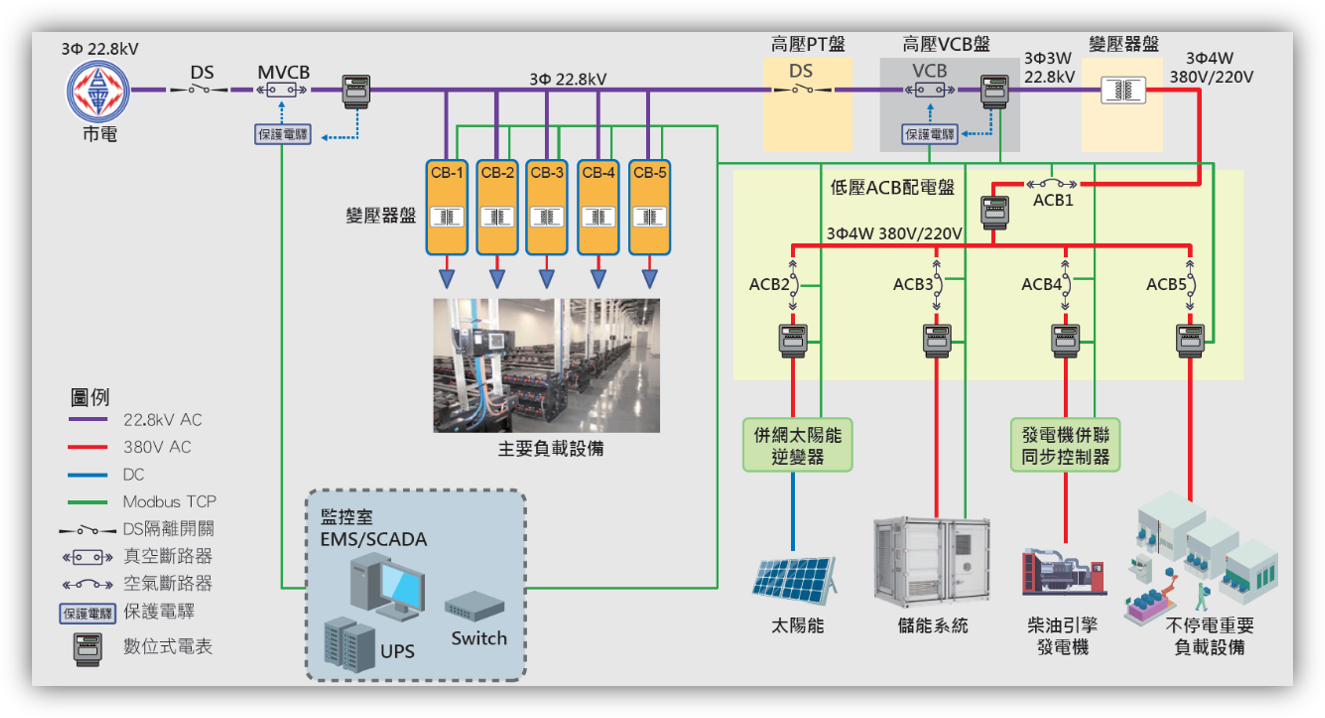
Managing Peak and Off-Peak Electricity Costs
-
Using Taiwan’s 114 high-voltage three-tier pricing as an example: for a dual-shift operation with a 1,600 kW contract, peak rates are NT$9.39/kWh, mid-peak NT$5.85/kWh, and off-peak NT$2.53/kWh—totaling around NT$4.18 million per month.
-
Simulated Setup: 1.2MW/3MWh Storage System Charging slowly during off-peak hours and discharging over 4 hours during peak time takes advantage of a NT$6.83/kWh price gap. Monthly electricity costs drop to NT$3.62 million—an estimated 86.7% reduction.
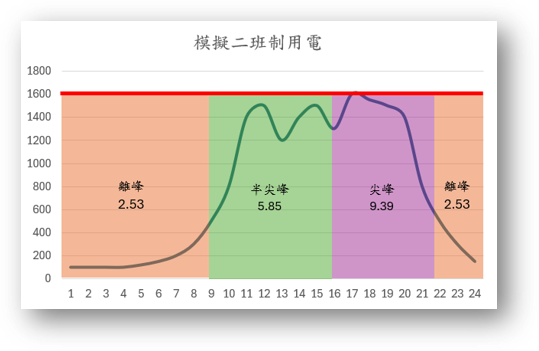
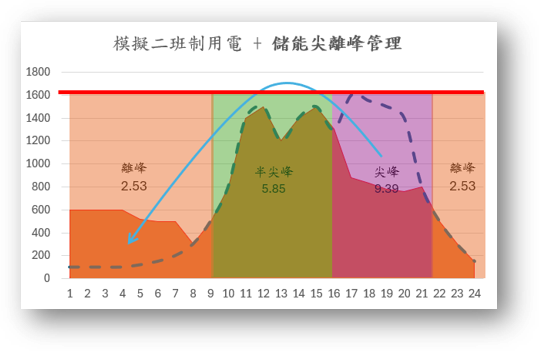
Demand Response Bidding
-
By adjusting the discharge timing of your energy storage system, you can join Taipower’s demand response and ancillary service programs. Participating companies receive direct benefits through electricity rate discounts.
-
With proper control, you can earn both peak/off-peak price savings and demand response incentives.
-
For example, bidding with 1.5MWh over 2 hours could earn an average monthly discount of around NT$360,000.

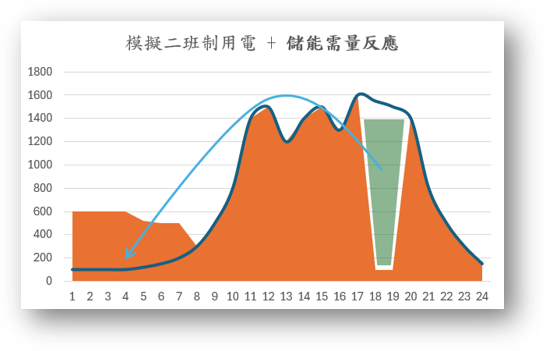
Reducing Demand Charges
-
If your facility occasionally spikes in power usage, energy storage can cover those short bursts—helping you avoid over-contract penalties and even lower your contracted capacity to save on base electricity fees.
-
In this case, reducing the contract from 1,600 kW to 1,300 kW and using storage to fill the gap saves nearly NT$67,000 per month—about 18.75%—while also avoiding penalty charges.

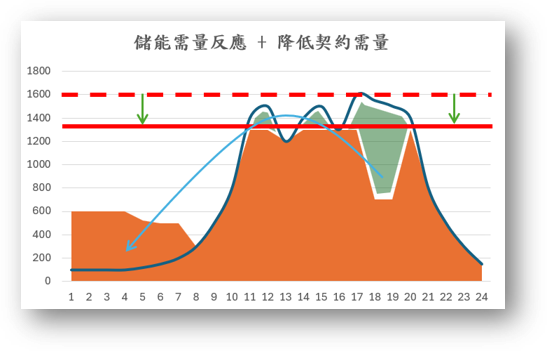
Backup Power Support
-
Most large enterprises rely on generators during outages, but the delay in response can still lead to losses. By combining behind-the-meter storage with generators and other backup sources, power can be restored within 200–300 milliseconds—minimizing downtime, protecting production schedules, and maintaining product quality.
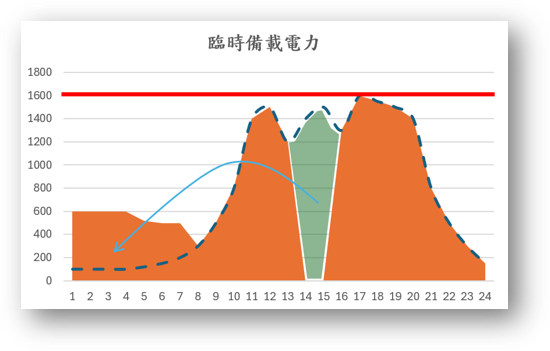
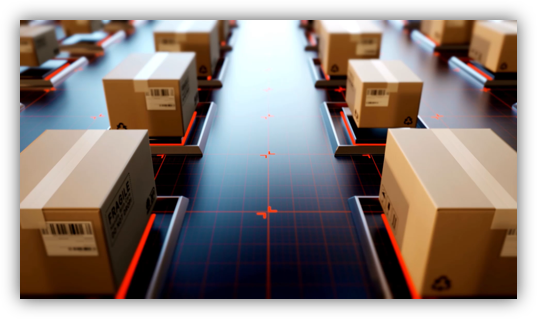
Boosting Solar Self-Consumption
-
For facilities with on-site renewable generation, energy storage can capture excess power when production exceeds usage. That stored energy can then be discharged during peak hours—maximizing the value of every kilowatt and preventing renewable energy from going to waste.
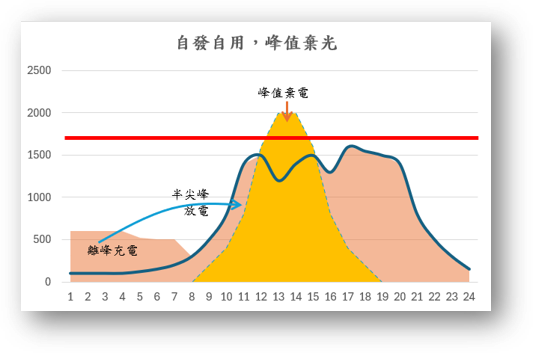
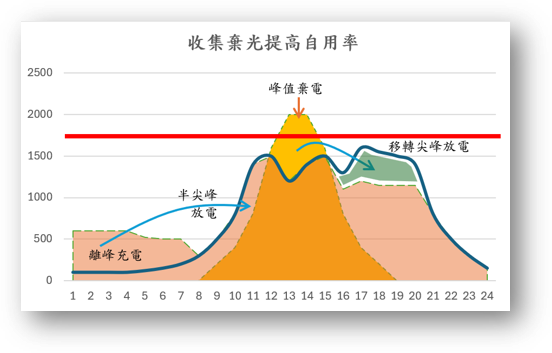
Optimizing Power Factor
-
In microgrids with lots of inductive or capacitive loads—like motors, transformers, or electronics—the relationship between voltage and current affects power factor, which in turn impacts energy efficiency and electricity costs.
-
Energy storage systems can provide PFC (Power Factor Correction), aligning current timing and waveform with voltage to save energy, boost system capacity, and stabilize current flow.
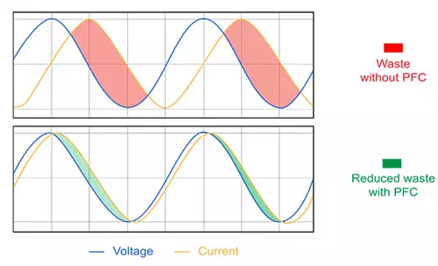
Incentives for Large Electricity Users
- For users with contracted loads over 5,000 kW who lack space for solar installations, energy storage can fulfill regulatory obligations while unlocking multiple benefits.
- Use storage to meet large-user requirements
- Required capacity = obligated install capacity × minimum 2-hour supply
- In addition to saving on electricity price differences, storage systems can join Taipower’s “Demand Response Load Management” program. By discharging for 2 hours between 6–8 PM, Monday to Friday (excluding off-peak days), users can voluntarily choose one of two incentive models:
- Fixed Hour Model – Meet 400 required hours annually; earn NT$10/kWh discount for hours beyond the target
- Tiered Reward Model – No required hours; earn NT$1/kWh for up to 150 hours, NT$2/kWh for 151–400 hours, and NT$5/kWh for anything above 400 hours
Incentives for Installation – Subsidy Program
- Eligible applicants: Corporate entities installing 1–5 MWh of storage, registered in industrial zones and using high-voltage power for manufacturing.
- Subsidy Terms & Limits:
- Up to NT$5 million per 1 MWh installed (draft terms; final amount subject to Ministry of Economic Affairs approval)
- Maximum subsidy per unit (same meter ID) is 5 MWh or NT$25 million per year
- Must use lithium battery cells made in Taiwan and non-China communication equipment
- torage must be installed behind-the-meter within internal wiring systems
- 20% subsidy upon signing, 80% upon completion
- Noted:
- Systems must be installed domestically and used for internal grid purposes—not as solar PV add-ons or related to solar storage
- For leasing, ESCO, or subscription models, costs must be negotiated between system provider and user
- Total budget for 2026 is NT$5 billion; subsidies are first-come, first-served
- Final subsidy amounts are subject to official approval by the Ministry of Economic Affairs
Incentives – Time-of-Use Tariff with Favorable Rates
- To encourage 24/7 high-power users like semiconductor and petrochemical industries to install behind-the-meter storage, Taipower is planning a revised three-tier time-of-use tariff for high and extra-high voltage users
- Non-summer peak hours: shifted to 3 PM–9 PM, NT$9.9/kWh; off-peak NT$2.39/kWh
- Summer rates: peak NT$10.20/kWh, mid-peak NT$6.00/kWh, off-peak NT$2.61/kWh
- These adjustments create a price gap of over NT$7.5/kWh in both seasons—well above typical discharge costs, offering strong financial incentives for storage installation.
- The new plan is optional. For safety, the user’s contracted capacity will cap the storage system size, and a separate sub-meter must be installed.
Year-by-Year Electricity Price Grawed
-
Taipower’s generation costs continue to rise, and with nuclear power phased out, electricity expenses for businesses are climbing steadily.
-
From 2021 to 2025, subsidies helped absorb the impact—but sharper increases are expected moving forward.
-
Over four years, rates have doubled—averaging a 50% annual hike. The price gap now nearly matches energy storage discharge costs.
-
For businesses, now is the right time to install behind-the-meter storage to manage peak and off-peak price differences
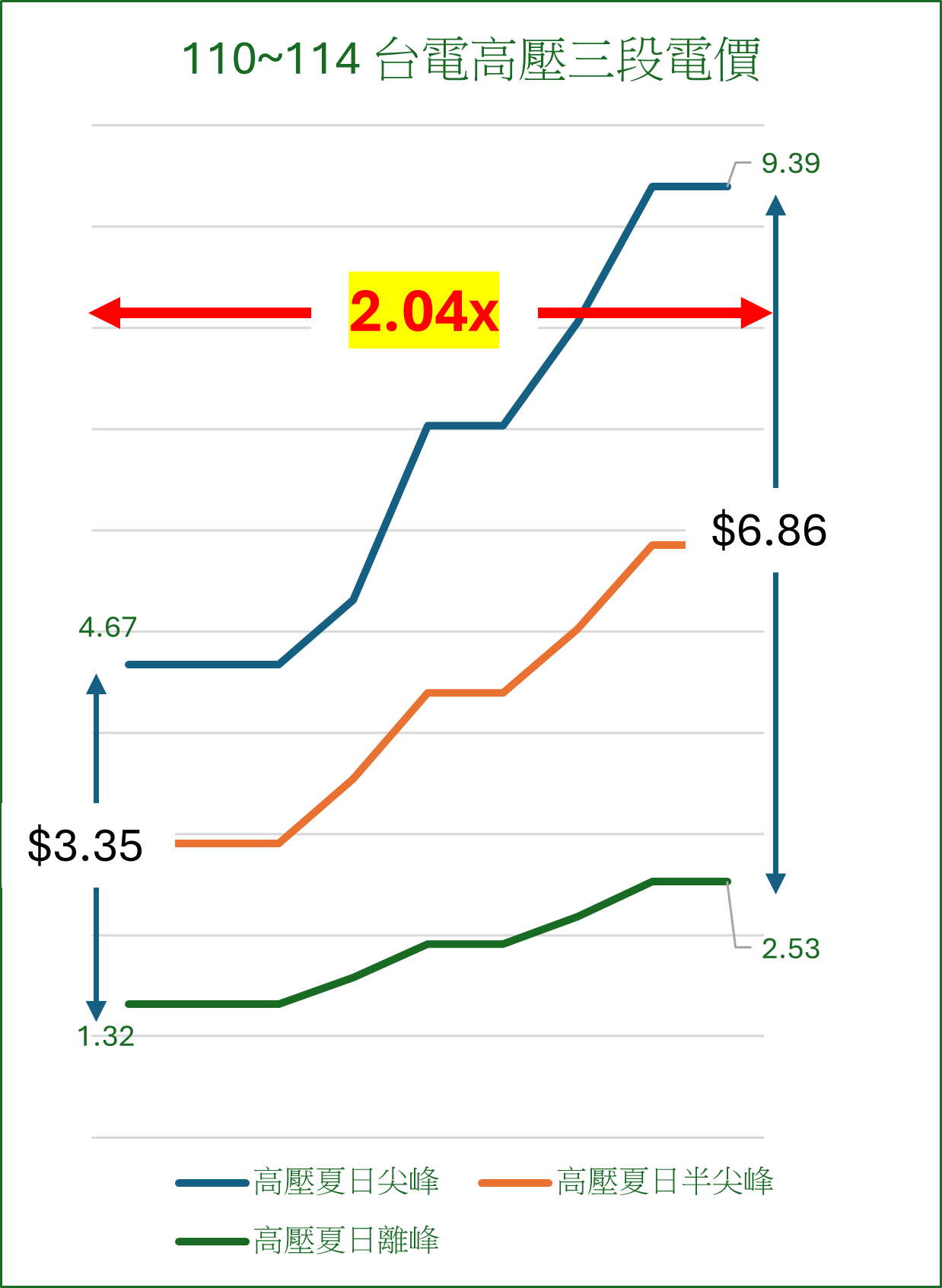
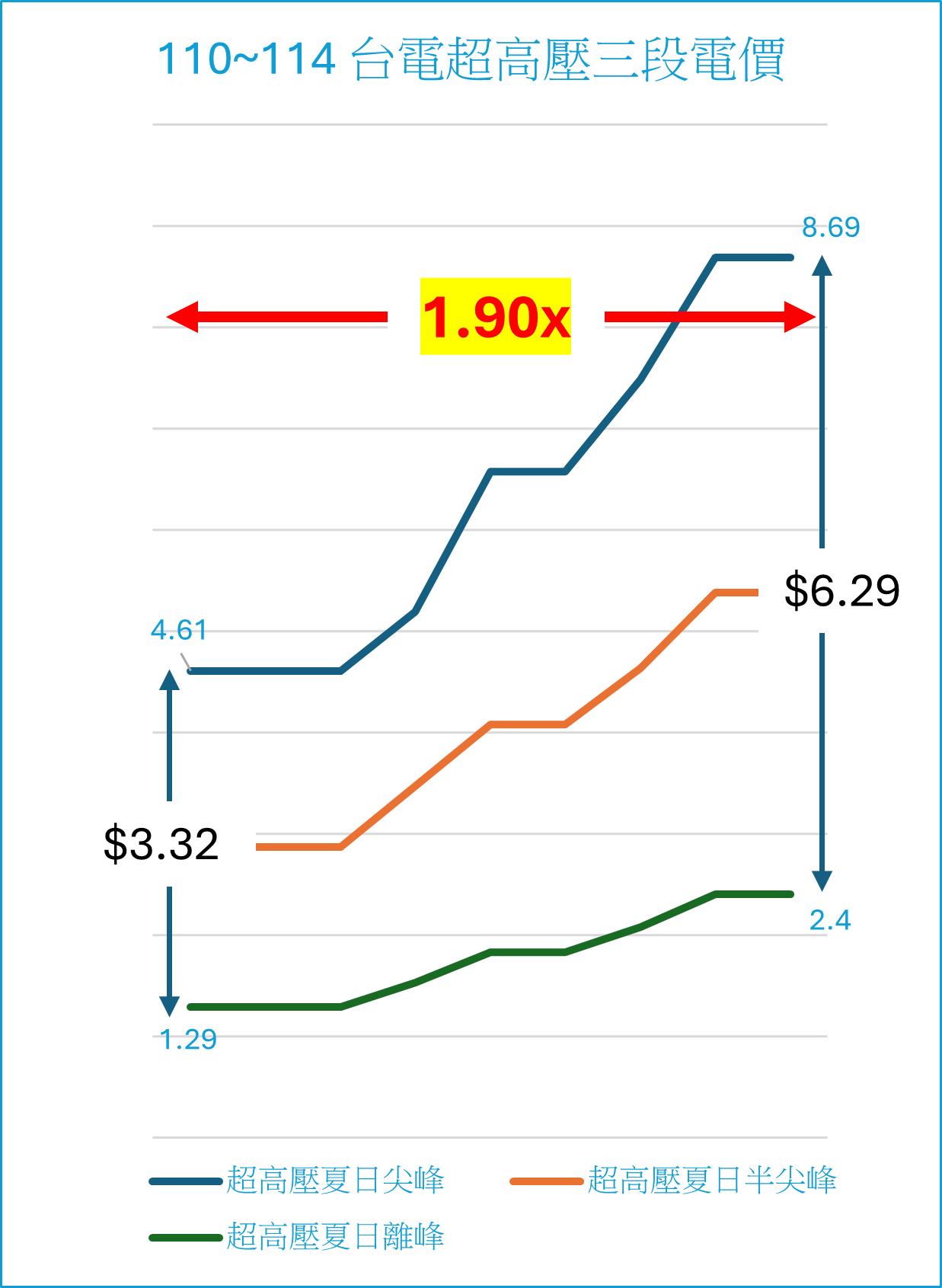
Want to Learn More?
Fill out the contact form to reach us!




